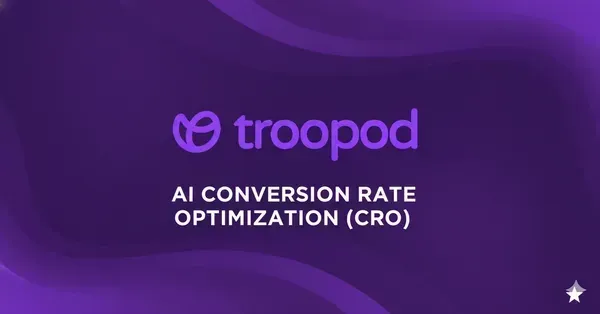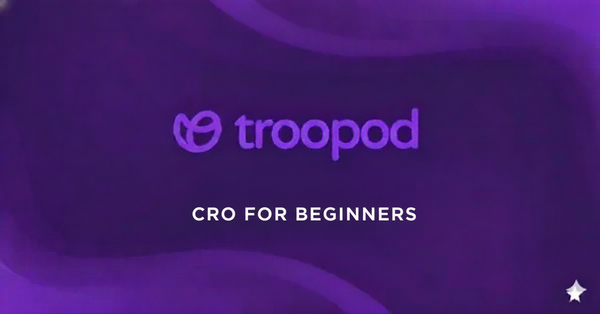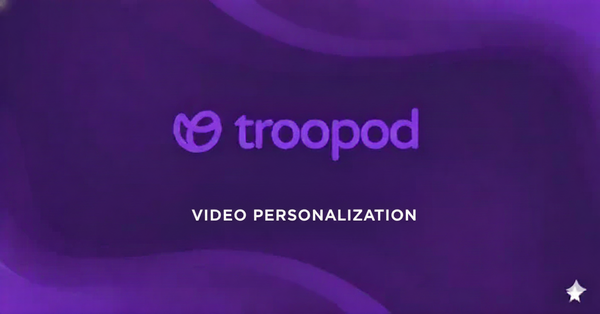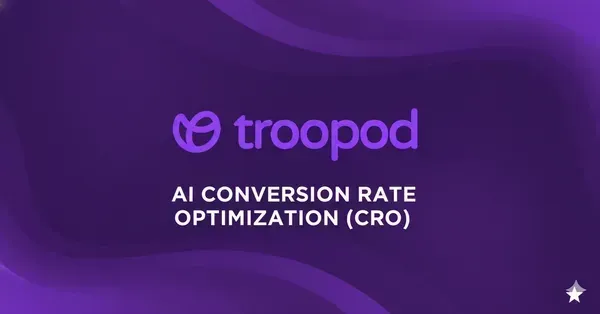The Conversion Rate Optimization (CRO) Revolution: How AI is Transforming Conversion Optimization from Guesswork to Science
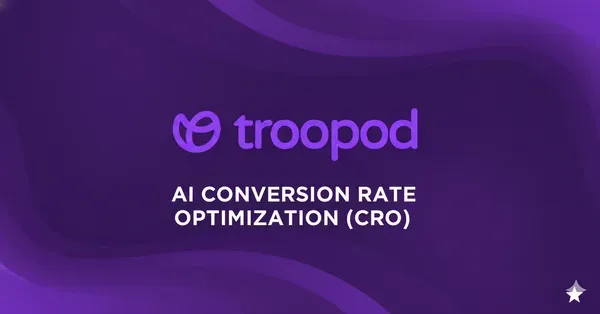
Picture This: The Last A/B Test You'll Ever Run
A Mumbai-based D2C skincare brand just finished their quarterly CRO review. Their team had spent three months running A/B tests, optimizing landing pages, and tweaking conversion funnels. Start Your AI CRO Journey →
The results?
- 6 A/B tests completed
- 4 tests failed (no statistical significance)
- 2 winning variations implemented
- Total conversion rate improvement: 11%
- Time invested: 480 hours
- Cost: ₹4.2 lakhs (tools + agency + internal resources)
Their founder, Priya, was frustrated but not surprised. This had been the pattern for two years: slow, expensive optimization delivering marginal gains.
Then she met a competitor at a D2C summit who casually mentioned: "We stopped running A/B tests six months ago. Our AI platform handles everything. We're seeing 94% conversion lift, and I barely think about optimization anymore."
Priya's reaction: "That's impossible. You can't just... automate conversion optimization."
The competitor's response: "That's what I thought too. Until I saw the data."
The Uncomfortable Truth About Traditional CRO in 2025
Traditional conversion rate optimization is dying. Not because it doesn't work—but because it's too slow, too expensive, and too limited for the speed of modern digital commerce.
Here's what "traditional CRO" looks like in most D2C companies today:
The Traditional CRO Playbook (Circa 2015-2024)
Week 1-2: Research & Hypothesis
- Analyze GA4 data manually
- Review heatmaps and session recordings
- Identify "problem areas"
- Form hypothesis: "If we change X, then Y will improve"
- Get stakeholder buy-in
Week 3-4: Design & Development
- Create test variations
- Brief designer (3 days turnaround)
- Developer builds variants (1 week)
- QA testing across devices
- Fix bugs found during QA
Week 5-10: Running the Test
- Launch A/B test
- Wait for statistical significance (95% confidence level)
- Need 100+ conversions per variant
- At 2% conversion rate = 5,000+ visitors per variant needed
- Monitor daily for data quality issues
Week 11: Analysis
- Export data to spreadsheets
- Run significance calculations
- Analyze segment performance
- Create winner report
- Present findings to stakeholders
Week 12: Implementation
- Push winning variation to 100% traffic
- Monitor for any issues
- Document learnings
- Start the entire process over for the next test
Total time: 12 weeks per element tested
Annual output: 4-5 successful optimizations if you're efficient
Conversion improvement: 20-30% annually if everything goes right
The Math That Should Terrify You
Let's say you're a D2C brand with:
- 100,000 monthly website visitors
- 2% baseline conversion rate = 2,000 conversions/month
- ₹2,500 average order value
- ₹50 lakh monthly revenue
Traditional CRO (Year 1):
- Investment: ₹5 lakhs (tools) + ₹18 lakhs (agency/team) = ₹23 lakhs
- Tests completed: 5 (optimistic)
- Successful tests: 3 (60% success rate)
- Cumulative lift: 25%
- New conversion rate: 2.5%
- New monthly revenue: ₹62.5 lakhs
- Additional revenue: ₹12.5 lakhs/month = ₹1.5 crores/year
- ROI: 6.5x
That sounds good, right?
But here's what you're NOT seeing:
What Traditional CRO Can't Do:
- ❌ Personalize for different traffic sources (all your Facebook ad traffic sees the same page as your Google organic traffic)
- ❌ Adapt to different devices beyond basic responsive design
- ❌ Test more than 2-3 variations at once
- ❌ Optimize in real-time (locked into test period)
- ❌ Learn from user behavior patterns at scale
- ❌ Predict which visitors will convert before they do
- ❌ Automatically align landing pages with specific ad campaigns
You're leaving money on the table. A LOT of money.
Enter AI: The CRO Revolution That Changes Everything Start Your AI CRO Journey →
Now let's look at how AI-powered conversion rate optimization works differently—and why it's not just "better," it's a fundamentally different paradigm.
How AI CRO Actually Works
Traditional CRO: Test Variant A vs Variant B. Wait. Pick winner. Repeat.
AI CRO: Test 1,000 variations simultaneously. Learn from every visitor. Optimize continuously. Never stop improving.
Here's the complete AI CRO process:
Phase 1: Data Intelligence (Minutes, Not Weeks)
AI platforms connect to your:
- Google Analytics 4
- Ad platforms (Meta, Google, TikTok)
- CRM and email data
- Heatmaps and session recordings
- Shopify/WooCommerce transaction data
Then the AI does something humans physically cannot do:
Analyzes millions of data points to identify:
- Which visitor segments convert best (and why)
- Which traffic sources deliver highest-intent users
- Which page elements drive conversions vs distractions
- Which combinations of elements perform best together
- Behavioral patterns that predict conversion likelihood
- Hidden opportunities buried in the data
Time taken: 24-72 hours of AI processing
Human equivalent: 6-8 weeks of analyst work (if it's even possible)
Phase 2: Predictive Modeling (Real-Time)
This is where AI becomes magical.
Every visitor who lands on your site triggers an AI decision process:
Step 1 (10 milliseconds): Visitor identified
- Traffic source detected (Facebook ad, Google search, Instagram, direct, etc.)
- Device type analyzed (mobile iOS, Android, desktop, tablet)
- Location captured (city, country)
- First-time vs returning visitor status
- Referrer analyzed (which specific ad or page brought them)
Step 2 (20 milliseconds): Behavioral prediction
- AI compares this visitor to millions of previous visitors
- Calculates probability of conversion
- Identifies most likely conversion barriers
- Determines optimal page experience needed
Step 3 (20 milliseconds): Dynamic page assembly
- AI selects optimal headline from tested variations
- Chooses hero image most likely to resonate
- Adjusts CTA copy and placement
- Personalizes social proof elements
- Optimizes form fields shown
- Sets pricing/offer display strategy
Total time: 50 milliseconds
Result: This specific visitor sees a page optimized specifically for someone with their exact characteristics and behavioral profile
The difference? Traditional CRO gives everyone the same "optimized" page. AI gives every visitor segment their own optimized page.
Phase 3: Continuous Learning (Always)
Here's where AI truly leaves traditional CRO in the dust:
Traditional CRO: Test concludes. Winner implemented. Learning stops until next test.
AI CRO: Every single visitor interaction becomes training data. The AI gets smarter every hour.
How it learns:
- Micro-conversions tracked:
- Scroll depth (did they read product details?)
- Time on page (engaged or confused?)
- Click patterns (exploring or bouncing?)
- Form interactions (starting checkout then abandoning?)
- Hover behaviors (considering but hesitating?)
- Macro-conversions measured:
- Add to cart (interest confirmed)
- Checkout initiated (high intent)
- Purchase completed (success!)
- AOV achieved (value optimization)
- Patterns discovered:
- "Mobile visitors from Instagram who land at 9 PM convert 47% better with video vs static images"
- "Desktop users from Google who read reviews convert at 8.2% vs 3.1% without reviews visible"
- "First-time visitors from tier-2 cities need COD option prominent to convert"
- Optimizations deployed:
- AI automatically adjusts page elements based on learnings
- No human intervention needed
- Changes happen in real-time
- Continuous improvement never stops
The compounding effect:
- Week 1: AI baseline learning, 15% lift
- Month 1: Pattern recognition improves, 35% lift
- Month 3: Deep learning activates, 60% lift
- Month 6: Predictive models mature, 95% lift
- Year 1: Continuous optimization, 120%+ lift
Traditional CRO stays linear. AI CRO compounds exponentially.
The Technology Behind AI CRO: How It Actually Works
Let's pull back the curtain on the AI that's revolutionizing conversion optimization.
Machine Learning Models
AI CRO platforms use several types of ML models:
1. Predictive Models:
- Predict which visitors will convert based on behavioral signals
- Forecast optimal page elements for different segments
- Anticipate seasonal trends and adjust accordingly
2. Classification Models:
- Categorize visitors into high/medium/low intent buckets
- Identify visitor characteristics (new/returning, mobile/desktop, etc.)
- Segment audiences automatically
3. Reinforcement Learning:
- AI learns which actions (page changes) lead to rewards (conversions)
- Continuously experiments and improves based on outcomes
- Self-optimizes without human intervention
4. Natural Language Processing:
- Reads your ad copy to understand messaging
- Analyzes customer reviews for pain points
- Generates aligned landing page copy
5. Computer Vision:
- Analyzes which images perform best
- Understands visual elements that drive engagement
- Suggests optimal image placement
The Real-Time Decision Engine
When a visitor lands on your site, here's what happens in 50 milliseconds:
Visitor arrives → AI identifies characteristics →
Queries predictive models → Calculates conversion probability →
Selects optimal page variant → Assembles dynamic experience →
Delivers personalized page → Tracks behavior →
Updates models with new data → Gets smarter
This happens 100,000+ times per day for a typical D2C brand.
Each interaction makes the AI smarter.
Case Study: From Traditional to AI CRO (Real Results)
Brand: Azani (D2C Activewear) Timeline: 18 months (9 months traditional CRO, then switched to AI)
Traditional CRO Phase (Months 1-9)
Setup:
- Hired CRO agency (₹2.8L/month retainer)
- Implemented VWO for A/B testing (₹35K/month)
- Monthly traffic: 145,000 visitors
- Baseline conversion: 2.3%
Tests Completed:
- Homepage hero image (3 variations) - Winner: 8% lift
- Product page layout redesign - Failed (no significance)
- Checkout flow optimization - Winner: 12% lift
- Trust badge placement - Winner: 6% lift
- Free shipping threshold messaging - Failed (negative impact)
- Mobile menu redesign - Winner: 9% lift
Results After 9 Months:
- Conversion rate: 2.3% → 2.89%
- Monthly revenue: ₹1.12 Cr → ₹1.41 Cr
- Improvement: 26%
- Investment: ₹28.35L
- Additional revenue: ₹29L (9 months)
- Net gain: ₹0.65L (barely broke even)
Founder's frustration: "We're investing heavily but seeing minimal returns. Is this as good as it gets?"
AI CRO Phase (Months 10-18)
Setup:
- Switched to Troopd AI CRO platform (₹2L/month)
- Kept one CRO strategist in-house (₹1.5L/month)
- Same traffic: ~145,000 monthly visitors
- Starting conversion: 2.89% (post-traditional CRO)
AI Actions (Automatic):
- Analyzed 4.2 million visitor sessions
- Identified 17 distinct visitor segments
- Created personalized experiences for each
- Aligned landing pages with 38 active ad campaigns
- Optimized mobile experience separately
- Tested 200+ element combinations continuously
Results After 9 Months:
- Conversion rate: 2.89% → 6.73%
- Monthly revenue: ₹1.41 Cr → ₹3.28 Cr
- Improvement: 133% (from AI start point)
- Total improvement from baseline: 193%
- Investment: ₹31.5L (9 months)
- Additional revenue: ₹1.87 Cr (9 months)
- Net gain: ₹1.56 Cr (5x ROI)
Key Insights from the Switch
What AI discovered that humans missed:
- Instagram traffic converted 4.2x better when seeing workout videos instead of product images
- Traditional CRO never tested this (assumed product images were best)
- AI automatically optimized for source
- Mobile visitors aged 18-25 had 78% higher AOV when shown bundle deals vs individual products
- Traditional CRO was focused on conversion rate, not AOV
- AI optimized for revenue, not just conversions
- Returning visitors who browsed but didn't buy converted 5.1x better with personalized "Welcome back" + item still in stock messaging
- Traditional CRO treated all visitors the same
- AI recognized returning visitors automatically
- Desktop visitors reading reviews for >90 seconds were price comparing and needed price match guarantee to convert
- This insight required analyzing specific behavioral patterns
- AI detected and addressed this automatically
Founder's reflection:
"We spent 9 months with traditional CRO and got 26% improvement. We spent 9 months with AI CRO and got 133% improvement. The difference isn't incremental—it's exponential. And the AI keeps getting better. Traditional CRO plateaued. AI CRO compounds."
When Traditional CRO Still Makes Sense (The Nuance)
AI isn't always the answer. Here's when traditional CRO might still be appropriate:
1. Very Low Traffic Sites
- Under 10,000 monthly visitors: AI needs data to learn
- Under 100 monthly conversions: Not enough conversion events for statistical learning
- Solution: Build traffic first, then implement AI CRO
2. Brand-First Businesses
- Luxury brands where brand positioning matters more than conversion optimization
- Heritage brands with strict brand guidelines
- Reason: AI optimizes for conversions, which might conflict with brand perception
3. Complex B2B Sales
- Long sales cycles (6+ months)
- Multiple decision makers
- Heavy relationship-based selling
- Reason: Conversions happen offline, so website optimization has limited impact
4. Limited Tech Resources
- No technical team to monitor AI systems
- Can't integrate APIs or tracking pixels
- Solution: Use hybrid approach with consultant support
5. Compliance-Heavy Industries
- Heavily regulated industries (pharma, finance)
- Every page change requires legal review
- Reason: AI's speed advantage neutralized by compliance requirements
The Hybrid Approach: Best of Both Worlds
The smartest D2C brands aren't choosing AI OR traditional—they're using both strategically.
The Hybrid CRO Stack:
AI CRO Handles (80% of optimization):
- Ad-to-landing page alignment
- Real-time personalization
- Continuous testing and optimization
- Behavioral pattern recognition
- Segment-specific experiences
- Mobile optimization
- Traffic source adaptation
Human CRO Handles (20% of optimization):
- Strategic positioning decisions
- Brand voice and messaging
- Major UX/UI overhauls
- New feature conceptualization
- Qualitative user research
- Creative campaign ideation
- Annual strategy planning
Investment:
- AI CRO Platform: ₹2L/month
- In-house CRO Strategist: ₹1.5L/month
- Quarterly UX Consultant: ₹1L/quarter (₹33K/month amortized)
- Total: ₹3.83L/month (₹46L annually)
Results:
- AI delivers 80% of conversion improvements
- Humans provide strategic direction and creativity
- Continuous improvement + breakthrough innovation
- Best of both worlds
How to Transition from Traditional to AI CRO
If you're currently using traditional CRO methods, here's the transition roadmap:
Month 1: Assessment
- Audit current CRO setup and results
- Identify what's working (keep it)
- Identify bottlenecks (address with AI)
- Select AI CRO platform
- Set baseline metrics
Month 2: Parallel Running
- Keep traditional tests running
- Implement AI CRO on 20% of traffic
- Compare results side-by-side
- Train team on AI platform
- Document learnings
Month 3: Gradual Shift
- Increase AI CRO to 50% traffic
- Reduce traditional test frequency
- Identify quick wins from AI
- Adjust team roles
- Plan for full transition
Month 4: Full Migration
- AI CRO on 100% traffic
- Traditional CRO team shifts to strategy
- Monitor results closely
- Iterate on AI settings
- Celebrate improvements
Month 5-6: Optimization
- AI learning accelerates
- Fine-tune segments
- Expand personalization
- Scale successful patterns
- Measure full impact
Expected timeline to see results:
- Week 2-4: Initial improvements (15-25% lift)
- Month 2-3: Significant improvements (40-60% lift)
- Month 4-6: Compounding improvements (70-100%+ lift)
- Month 7-12: Continuous optimization (100-150%+ lift)
The Future of CRO: What's Coming Next
AI CRO is evolving rapidly. Here's what's on the horizon:
1. Predictive Pre-Optimization
AI will predict what page changes will work BEFORE testing them, reducing experimentation time
2. Cross-Device Journey Optimization
AI will optimize the complete journey across mobile, desktop, app, and even in-store experiences
3. Voice and Visual Search Optimization
As search evolves, AI will optimize for voice queries and visual search results
4. Emotional AI
AI will detect visitor emotions through micro-interactions and adapt pages to emotional state
5. Autonomous CRO
AI will make strategic decisions without human oversight, requiring only approval for major changes
The trajectory is clear: CRO is moving from human-led to AI-led, with humans providing strategic oversight rather than tactical execution.
Making the Decision: Is AI CRO Right for Your Brand?
Ask yourself these questions:
Traffic & Scale: ✅ Do you have 10,000+ monthly visitors? ✅ Do you have 100+ monthly conversions? ✅ Do you run multiple ad campaigns?
Current CRO State: ✅ Are traditional tests taking too long? ✅ Are results plateauing? ✅ Do you want faster optimization?
Business Goals: ✅ Do you need 2-3x conversion improvements (not just 20-30%)? ✅ Are you scaling ad spend? ✅ Is personalization important?
Resources: ✅ Can you invest ₹18-36L annually in optimization? ✅ Do you have technical resources for integration? ✅ Are you open to AI-driven decisions?
If you answered "yes" to most of these, AI CRO is the right move.
Partner with Troopod: AI-Powered CRO for D2C Brands
At Troopod, we've helped 100+ Indian D2C brands transition from traditional CRO to AI-powered optimization.
What We Deliver:
- AI-powered ad-to-landing page alignment for every campaign
- Real-time personalization across all traffic sources
- Continuous optimization that never stops learning
- Full-service support so you focus on growth, not technical details
Our Results:
- 25%+ average conversion lift in first 60 days
- 2-4 week time to first wins (vs 3-6 months traditional)
- 40-70% lower cost than traditional CRO agencies
- 100+ brands trust us for their optimization
Get Your Free CRO Assessment
We'll analyze your current setup and show you:
- Where you're losing conversions today
- Expected improvement with AI CRO
- ROI projection for your business
- 90-day implementation roadmap
No sales pitch. Just insights.
The Bottom Line
Traditional CRO isn't dead—but it's no longer enough.
In 2025, D2C brands face:
- Rising ad costs
- Increasing competition
- Fragmented customer journeys
- Higher customer expectations
- Pressure for faster growth
You can't win with slow, manual, one-size-fits-all optimization anymore.
AI CRO gives you:
- Speed (real-time vs weeks)
- Scale (unlimited tests vs one at a time)
- Personalization (every visitor vs everyone the same)
- Intelligence (pattern recognition vs human guessing)
- Results (transformational vs incremental)
The brands winning in 2025 are those that embraced AI CRO in 2024.
The question isn't whether AI will replace traditional CRO.
The question is: How long will you wait to make the switch?
Your competitors aren't waiting.
Ready to transform your conversion rate optimization?
Join 100+ D2C brands already seeing 25-150% conversion improvements with Troopd's AI-powered CRO platform.


